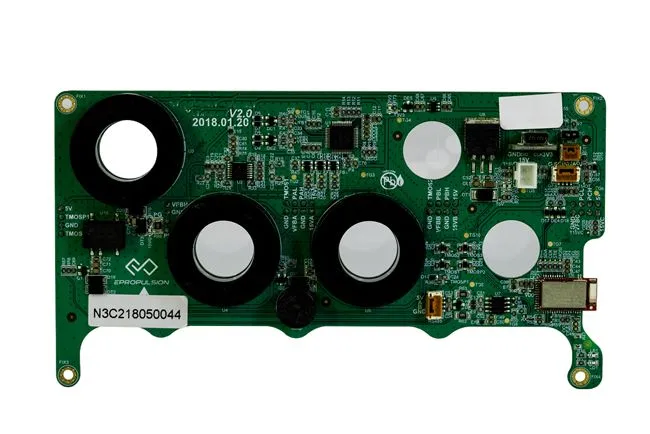Proven Techniques for 5G PCB Signal Testing and Validation
As 5G technology rapidly advances, the need for robust and reliable PCB assembly techniques becomes increasingly crucial. Proven techniques for 5G PCB signal testing and validation are essential to ensure optimal performance and reliability in high-frequency applications. These methods encompass a range of strategies, including advanced signal integrity analysis, electromagnetic compatibility (EMC) testing, and rigorous thermal management evaluations. By implementing these proven techniques, manufacturers can significantly enhance the quality and reliability of their 5G PCB assemblies, ultimately contributing to the seamless deployment of next-generation wireless networks.

Key Considerations for 5G PCB Signal Integrity
High-Frequency Material Selection
Selecting the appropriate materials for 5G PCB assembly is paramount to achieving optimal signal integrity. High-frequency laminates with low dielectric constants and loss tangents are essential for minimizing signal attenuation and distortion. Materials such as Rogers RO4350B or Taconic TLY-5 offer excellent electrical properties suitable for 5G applications. These advanced materials help maintain signal quality even at millimeter-wave frequencies, which is crucial for 5G performance.
Impedance Matching and Control
Precise impedance matching and control are critical aspects of 5G PCB signal integrity. Maintaining consistent impedance throughout the PCB layout helps minimize signal reflections and maximize power transfer. Designers must carefully consider trace widths, spacing, and layer stackups to achieve the desired impedance values, typically 50 ohms for most RF applications. Advanced PCB design tools and electromagnetic field solvers can aid in optimizing impedance control for complex 5G layouts.
Signal Routing and Layer Stackup Optimization
Optimizing signal routing and layer stackups is essential for minimizing crosstalk and electromagnetic interference in 5G PCB assemblies. Implementing proper ground planes and strategic via placement can significantly improve signal integrity. Designers should consider using buried and blind vias to reduce signal path lengths and minimize parasitic effects. Additionally, careful consideration of return path discontinuities and maintaining signal symmetry can further enhance the overall performance of 5G PCBs.
Advanced Testing Methods for 5G PCB Validation
Vector Network Analysis (VNA)
Vector Network Analysis is a powerful tool for validating 5G PCB signal performance. VNAs provide comprehensive S-parameter measurements, allowing engineers to assess signal transmission, reflection, and phase characteristics across a wide frequency range. By analyzing VNA data, designers can identify potential issues such as impedance mismatches, excessive insertion loss, or unwanted resonances that may impact 5G performance. VNA measurements are particularly valuable for characterizing high-frequency components and transmission lines in 5G PCB assemblies.
Time Domain Reflectometry (TDR)
Time Domain Reflectometry is an essential technique for identifying and locating discontinuities in 5G PCB signal paths. TDR measurements provide valuable insights into impedance variations, connector mismatches, and other signal integrity issues that may not be apparent through traditional frequency domain analysis. By analyzing the time-domain response of PCB traces, engineers can pinpoint the exact location of discontinuities and make necessary adjustments to optimize signal performance in 5G applications.
Near-Field Electromagnetic Scanning
Near-field electromagnetic scanning is a sophisticated method for visualizing and analyzing electromagnetic fields on 5G PCBs. This technique uses specialized probes to measure the electric and magnetic fields in close proximity to the PCB surface. By mapping these fields, engineers can identify potential EMI hotspots, assess the effectiveness of shielding measures, and validate the overall electromagnetic compatibility of 5G PCB assemblies. Near-field scanning is particularly valuable for optimizing antenna performance and minimizing interference between high-frequency components.
Thermal Management and Reliability Testing for 5G PCBs
Thermal Imaging and Simulation
Effective thermal management is crucial for ensuring the reliability and performance of 5G PCB assemblies. Thermal imaging techniques, such as infrared thermography, allow engineers to identify hotspots and areas of excessive heat generation on the PCB. This information can be used to optimize component placement and improve thermal dissipation strategies. Additionally, thermal simulation software can be employed to predict temperature distributions and assess the effectiveness of cooling solutions before physical prototyping, saving time and resources in the development process.
Environmental Stress Testing
Environmental stress testing is essential for validating the long-term reliability of 5G PCB assemblies. Subjecting PCBs to accelerated life testing, including thermal cycling, humidity exposure, and vibration testing, helps identify potential failure modes and assess the robustness of the design. These tests are particularly important for 5G applications, where PCBs may be exposed to harsh environmental conditions in outdoor deployments. By conducting thorough environmental stress testing, manufacturers can ensure that their 5G PCB assemblies meet the demanding reliability requirements of next-generation wireless networks.
High-Speed Signal Integrity Testing
High-speed signal integrity testing is crucial for validating the performance of 5G PCB assemblies under real-world conditions. Techniques such as eye diagram analysis, jitter measurements, and bit error rate testing provide valuable insights into signal quality and data transmission reliability at high frequencies. Advanced test equipment, including high-bandwidth oscilloscopes and signal integrity analyzers, enables engineers to characterize the performance of 5G PCBs across a wide range of operating conditions. By conducting comprehensive high-speed signal integrity testing, manufacturers can ensure that their 5G PCB assemblies meet the stringent performance requirements of modern wireless communication systems.
Conclusion
Implementing proven techniques for 5G PCB signal testing and validation is essential for ensuring the performance and reliability of next-generation wireless communication systems. By focusing on key considerations such as material selection, impedance control, and signal routing optimization, manufacturers can lay a solid foundation for high-quality 5G PCB assemblies. Advanced testing methods, including VNA measurements, TDR analysis, and near-field scanning, provide valuable insights into signal integrity and electromagnetic compatibility.
Furthermore, thorough thermal management and reliability testing help ensure that 5G PCBs can withstand the demanding conditions of real-world deployments. By embracing these proven techniques, the industry can accelerate the development and deployment of robust 5G infrastructure, paving the way for a new era of high-speed, low-latency wireless communications.
X-ray, AOI & flying probe ensure RF performance | Ring PCB
Ring PCB Technology Co., Limited offers comprehensive one-stop PCB and PCBA services, ensuring reliability at every stage. With 17 years of excellence, we deliver innovative and cost-effective solutions for various industries. Our integrated PCBA services include full assembly support, DFM/DFA optimization, and rigorous quality control through X-ray inspection, AOI testing, and 100% functional validation.
Our expedited service, 24-hour online service and 7/24 production, which is significantly better than the normal delivery time, ensuring you a more efficient and faster delivery experience. Trust Ring PCB for your 5G PCB assembly needs. Contact us at [email protected] for expert assistance and unparalleled quality.
References
1. Johnson, H. W., & Graham, M. (2021). High-Speed Digital Design: A Handbook of Black Magic (5th ed.). Prentice Hall.
2. Bogatin, E. (2020). Signal and Power Integrity - Simplified (3rd ed.). Prentice Hall.
3. Hall, S. H., & Heck, H. L. (2019). Advanced Signal Integrity for High-Speed Digital Designs. Wiley-IEEE Press.
4. Hubing, T. H. (2018). Electromagnetic Compatibility Engineering. Wiley.
5. Swaminathan, M., & Engin, A. E. (2022). Power Integrity Modeling and Design for Semiconductors and Systems (2nd ed.). Prentice Hall.

Welcome to Ring PCB! Share your inquiry, and receive a tailored quotation!

Ring PCB, your trusted partner for PCB & PCBA Full Turnkey Solutions



